
|
|
|
|
|
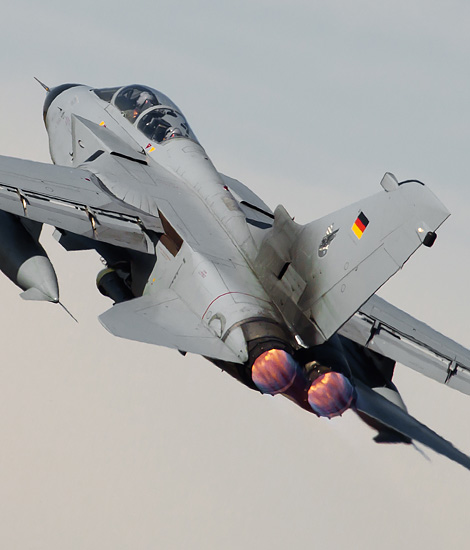
|
Jagdbombergeschwader 32; Lechfeld, June 29, 2011
The Panavia Tornado from Bavaria; Text and Photograph’s by Alex van Noye
On Wednesday, June 29, 2011, I had a visit at the German Tornado base Lechfeld. The Tornado ECR of
Jagdbombergeschwader 32 is based at this air base. The Panavia Tornado Project was like the Eurofighter
Typhoon project part of the collaboration between companies which later would form EADS.
The Panavia Tornado is a 2 engine aircraft with wings, which operate on the swing-wing principle. The
Tornado was jointly designed by Great-Britain, Germany and Italy. There are 3 primary versions developed
of the Tornado. The first variant is the Tornado IDS (Indicator/Strike) fighter-bomber. The second version
is the Tornado ECR (Electronic Countermeasures/Reconnaissance) which is used for the disruption of enemy
electronic equipment. Finally, the third version is the Tornado ADV (Air Dominancy Version) which is suitable
for air defense and interception. The Tornado was designed and built by Panavia Aircraft GmbH. This is an
international consortium, consisting of British Aerospace from Great-Britain, MBB from West Germany and
Aeritalia from Italy. The Tornado flew for the first time on August 14, 1974. The aircraft was deployed
during the Gulf War by the Royal Air Force (RAF), the Italian Air Force and Royal Saudi Air Force. Also an
international partnership for the training of pilots was setup when the Tornado entered service. This was done
at RAF Cottesmore in Great-Britain. The unit where all the Tornado countries were represented was the Tri-National
Tornado Training & Transition Establishment (TTTE). A total of 992 Tornadoes were built and the aircraft is in
use in 4 countries. A significant number of aircraft is nowadays still in use in those 4 countries.
The prototype of the Luftwaffe Tornado ASSTA 1 made its first flight on August 14, 1974 from Manching Air
Base in the former West Germany. The First Tornado IDS was delivered on July 27, 1979. The Luftwaffe received
a total delivery of 247 aircraft of which 35 were equipped with dual controls for training purposes. The
Tornado IDS was assigned to the 5 Jagdbomber- geschwaders as the replacement of the Lockheed F-104G Starfighter.
The first unit which received the Tornado was Jagd- bombergeschwader 31 "Boeckl" from Nörvenich. This unit
started to switch to the Eurofighter in 2009. The second unit which received the Tornado IDS was Jagdbom-
|
|
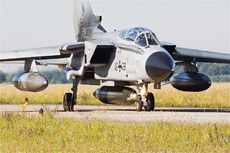
|
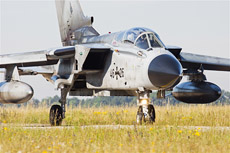
|
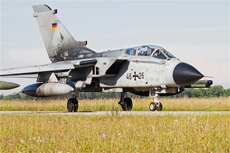
|

|
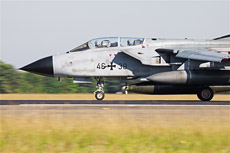
|
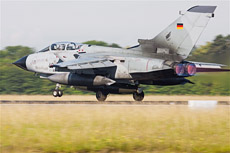
|
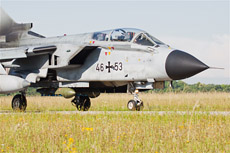
|
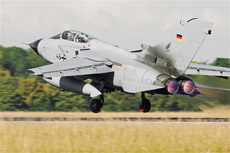
|
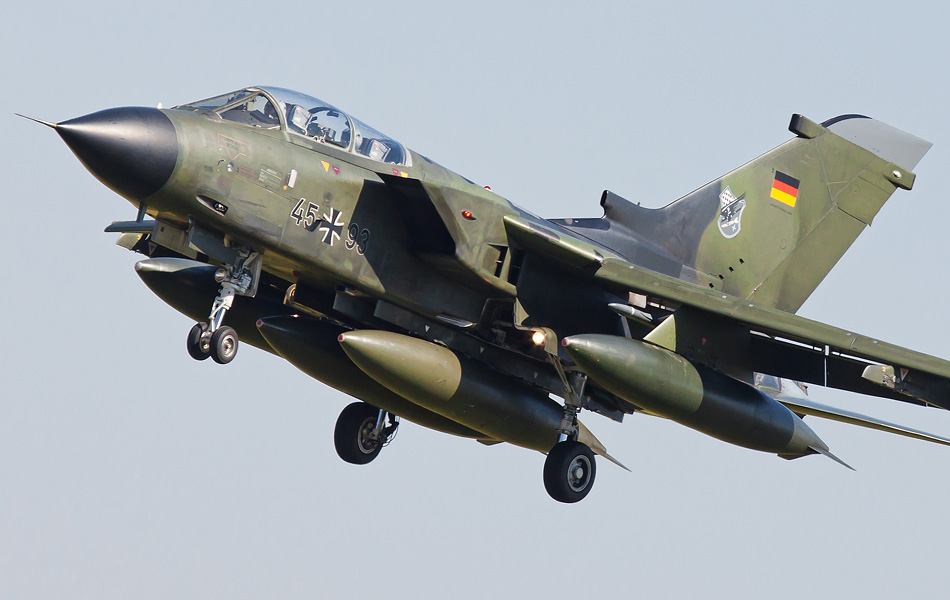
|
bergeschwader 33 from Büchel. This unit is currently operating with 36 aircraft and will make the transition
to the Eurofighter in 2013 or 2014. The third unit which started to use the Tornado IDS was Jagdbombergeschwader
34 "Allgäu" from Memmingen; this unit was disbanded in 2003. The fourth unit which flew the Tornado IDS was
Jagdbombergeschwader 38 "Friesland" from Jever; JBG-38 was disbanded in 2005. And finally, the fifth unit which
received the Tornado IDS was Aufklärungsgeschwader 51 "Immelmann" from Schleswig-Jagel. This unit has 46 aircraft
in service and will receive the upgrade to ASSTA 2. The Tornado ECR entered service at the Luftwaffe at the beginning
of the 90s. These aircraft were all assigned to Jagdbombergeschwader 32 at Lechfeld. This unit has 34 aircraft in
service which are all upgraded to the ASSTA 2 standard. Besides the Luftwaffe, the Navy has also flown with 2 Tornado
units. The first of the two units was Marinefliegergeschwader 1 from Jagel; this unit was disbanded in 1993. The
second navy unit was Marinefliegergeschwader 2 from Eggebek; this unit was disbanded in 2005.
After a poor day at Manching, I arrived early on Wednesday morning at Lechfeld. The weather was good, because the
sky was clear blue. We went by bus to the runway after a brief introduction with our guide. The intention was to
shoot some action shots of the Tornado’s during their departure. We were positioned halfway the main runway. I
already had some experience with this spot; it is an excellent spot for action photos. A small taxi track was in
front of us between us and the runway. The Tornado’s used this taxi track after startup. It did not take long
before the first engines were started in the shelter area. The first Tornado appeared on the runway after 10
minutes. This Tornado was already a special one, because it was a Tornado with a buddy refueling pod under its
fuselage. This is a system which is not often seen underneath the Tornado. 3 Tornado’s taxied in a short period
from the shelter area to the runway. The shelter area on the other side of the runway was also active. The first
Tornado lined up on the runway after the final check. It is a known fact that all Tornado’s will use full
afterburner during take-off. This is necessary, because the Tornado is a very heavy aircraft. All Tornado’s
which took off came loose from the ground at the point where we stood. This resulted in the action photo for
which I came to Lechfeld. All the Tornado’s took off with full afterburner.
Once we arrived at the landing area, it was only a matter of time before the first Tornado reported for landing.
This occurred within 1 hour after the last start. The first Tornado which returned to Lechfeld was the Tornado with
the refueling pod. The second Tornado which came in was an aircraft which returned from another location. This
Tornado IDS came from a far destination, because the aircraft carried 4 external fuel tanks. One of the Tornado’s
which came in was the Tiger from the NATO Tiger Meet. Some of the returning aircraft had some fuel left and they
decided to fly some circuits. I was now standing on a small hill at the head of the runway. One of the Tornado’s
flew over the runway at low level with its gear up. I was also able to shoot some photos at the moment of touchdown
on the runway. This resulted in photos where the smoke from the tires was visible as the Tornado touched the ground.
We went to the shelter camp after the landing of the last Tornado. The ground crew parked the special paint Tornado
in front of the hangar. We were able to shoot the Tornado from all possible angles. The last place which we visited
during our visit to Lechfeld was the small museum on the other side of the base. There were some old Starfighters
next to the museum. Our excellent visit to Lechfeld was over after a short visit to this museum. We were brought
back to the main gate of the base and we drove on to Kaufbeuren. We had a visit at the Technical School of
Kaufbeuren.
|
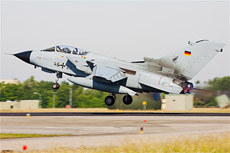
|
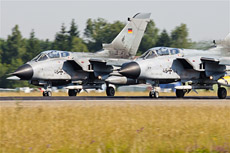
|
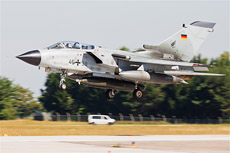
|
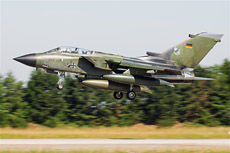
|
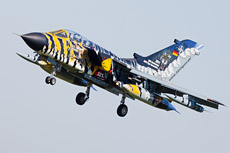
|
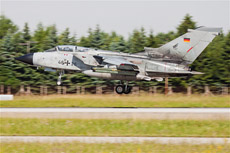
|
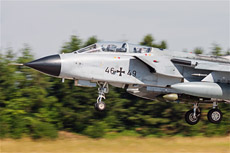
|
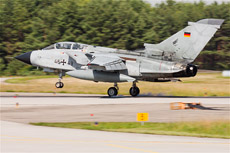
|
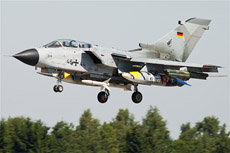
|
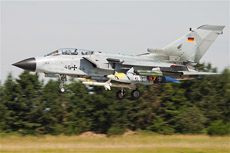
|
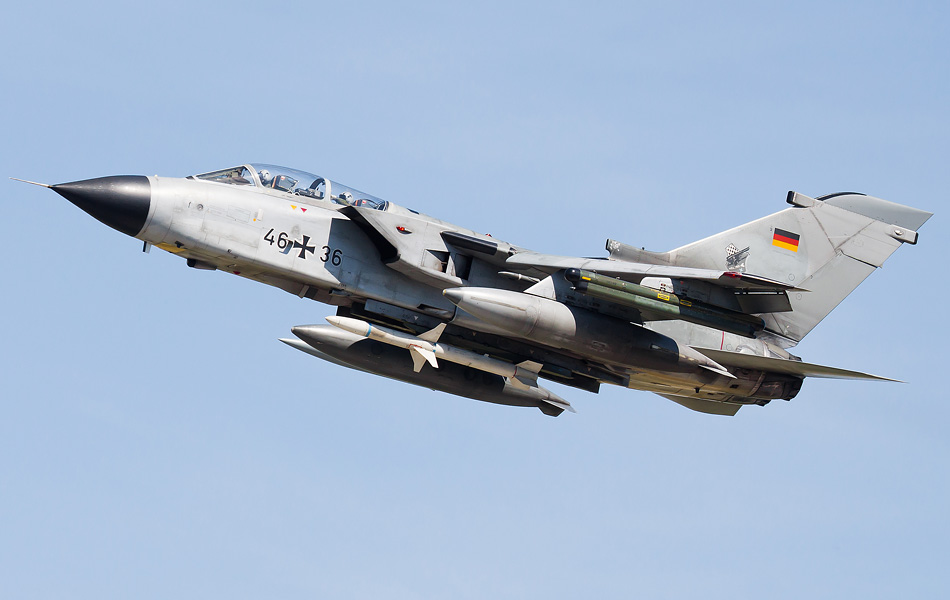
|
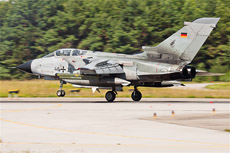
|
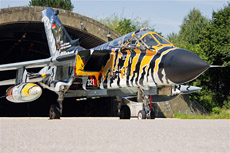
|
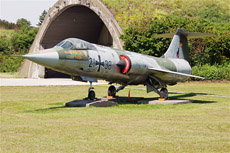
|
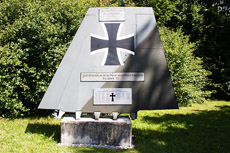
|
|
|

|







